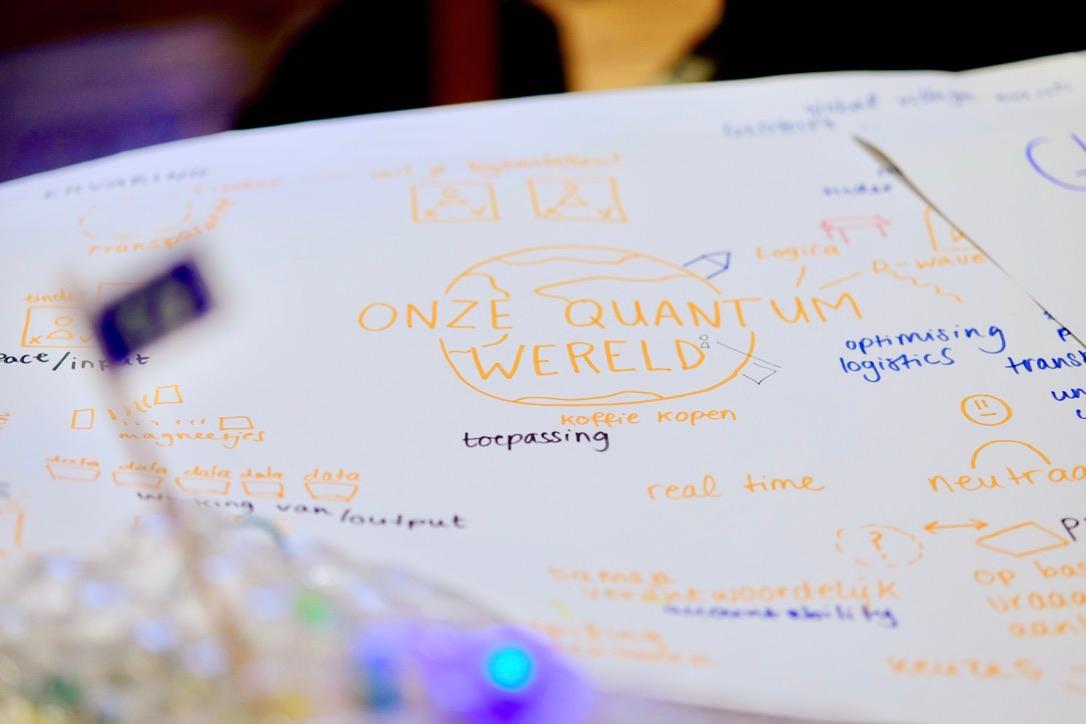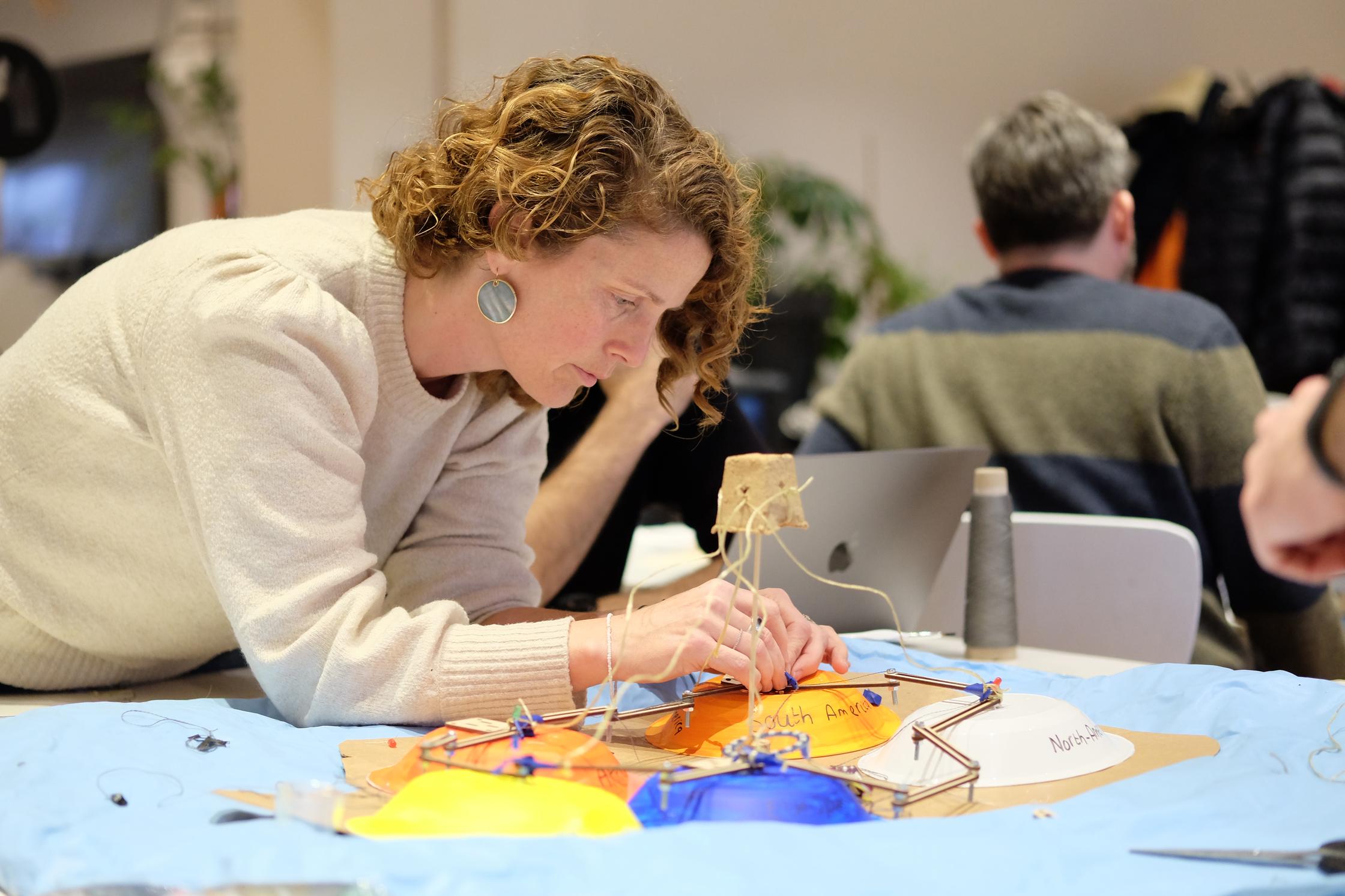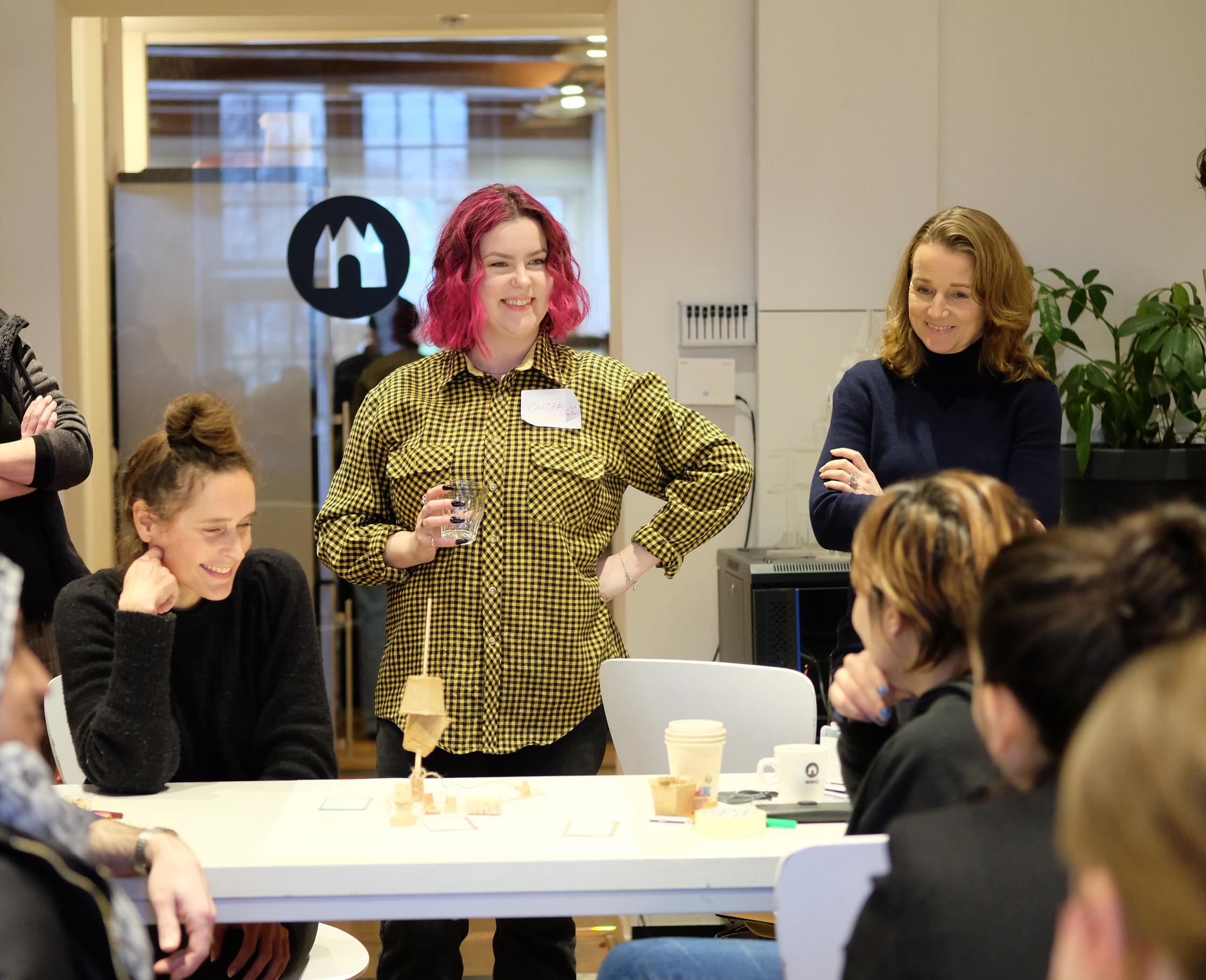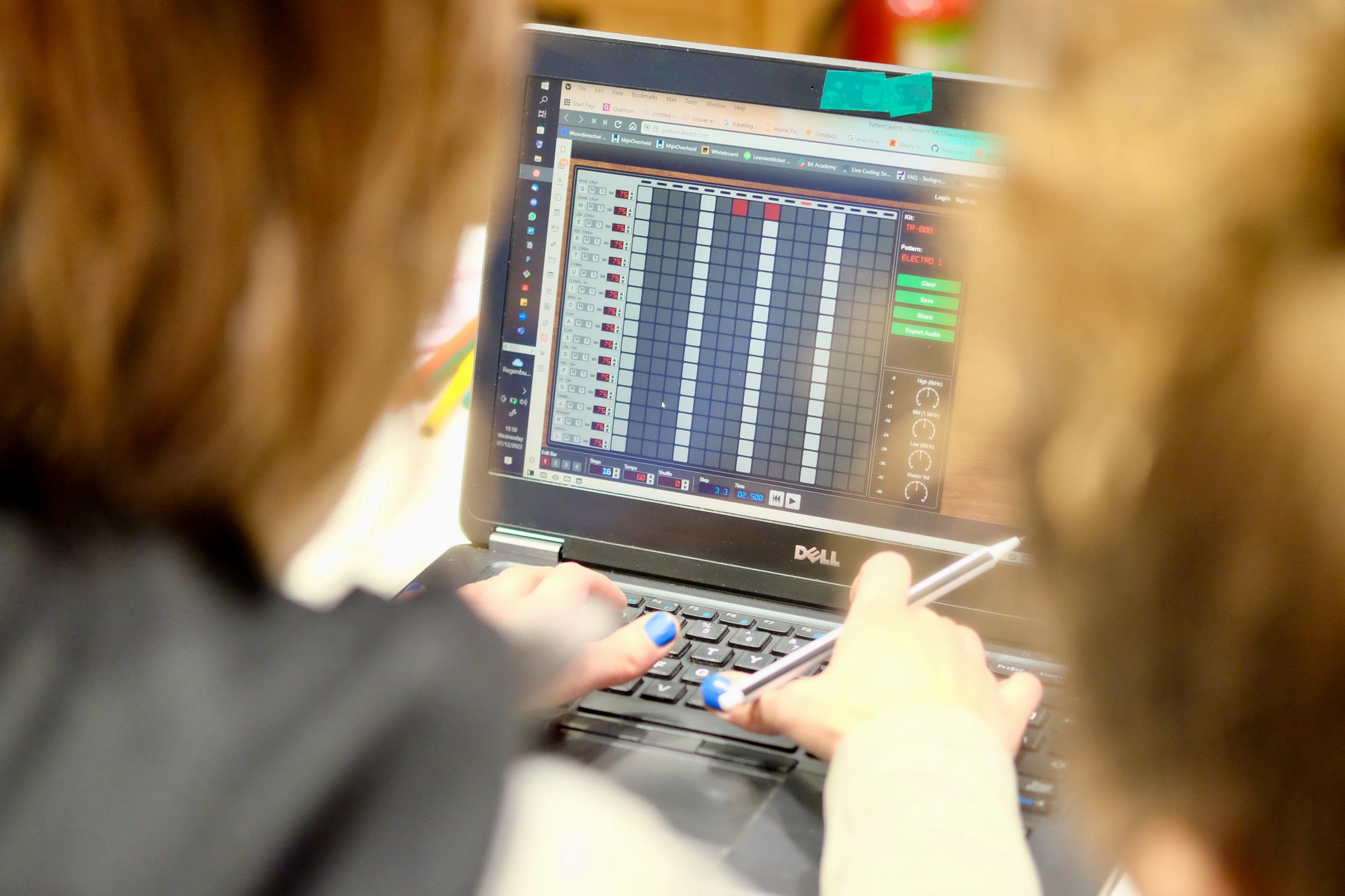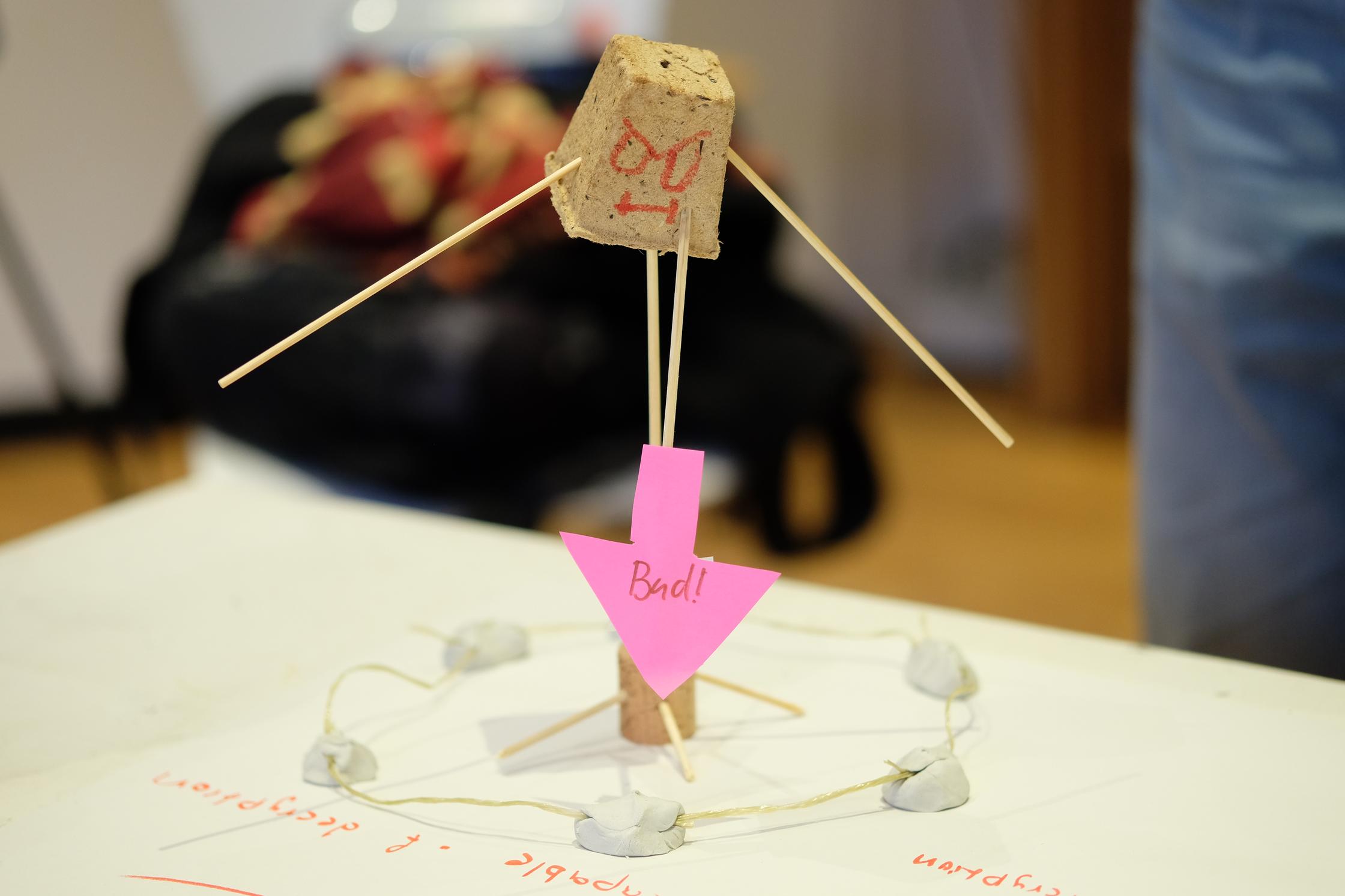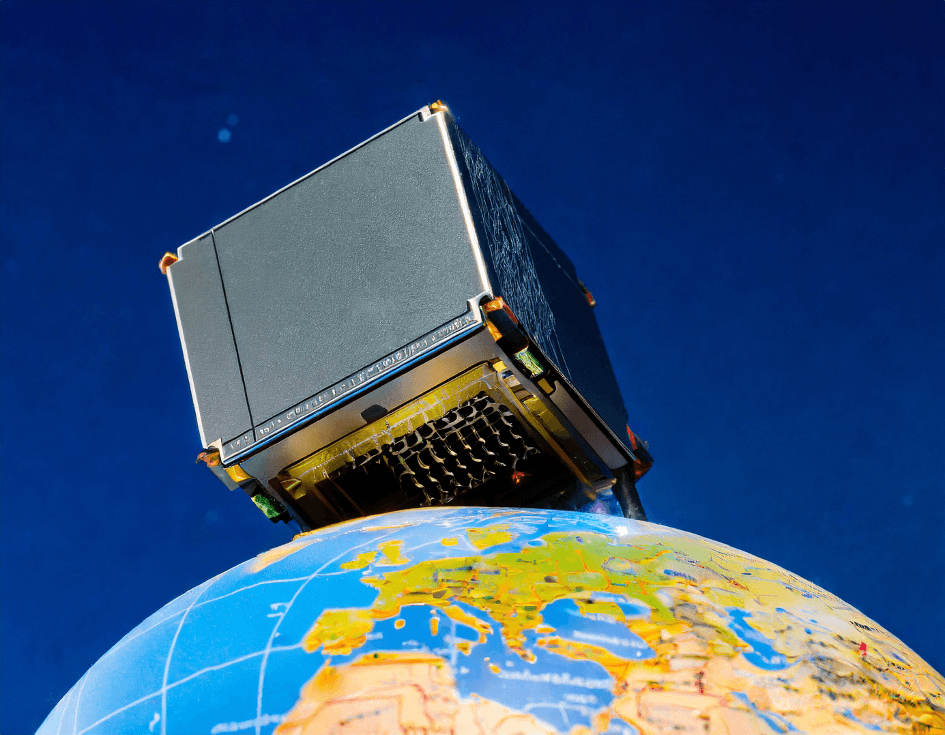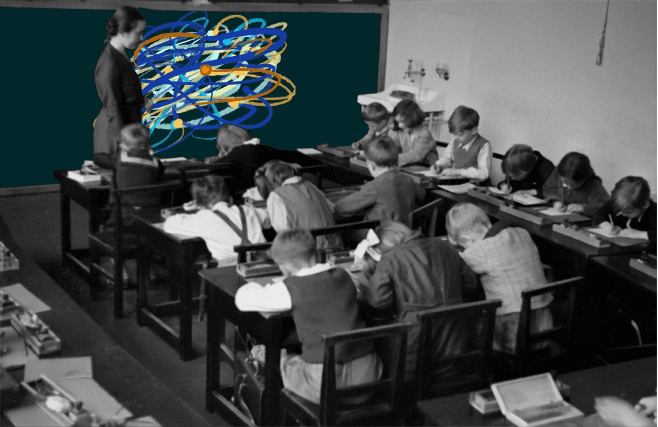Dutch artist Lucky Fonz III sings ‘kwantumwetenschapper, neem me bij de hand’ (‘quantum scientist, take me by the hand’) on one of the tracks on his album Hemellichamen (Celestial Bodies). The artist explains that this song is about ‘the unknown and the infinity of his own not-knowing’. Last week, I too was taken by the hand by quantum scientists. During a two-day art hackathon, I learned about quantum together with students, artists, scientists, philosophers and other tech-minded citizens. We worked on prototypes proposing new applications of quantum computers. By visualising artistic applications of the quantum computer, we hoped to gain fascinating insights into how we can apply quantum technology in society. First, let's bring quantum technology a little closer to myself.
A crash course in quantum
The first quantum scientist, philosopher Skander Jaïbi, took us through the basics of quantum physics. I learned about superposition, entanglement, probability, a cat in a box and qubits. I listened with wonder and thought of the first time I learned about quantum mechanics. I was about 14 years old. We only had two lessons to dive into the quantum world. I was bummed. My bored adolescent heart was quickened by a theory so at odds with our everyday experience. How could a particle be in two places at the same time? Did I have the same ability? And why does that particle stop acting so curious when we start measuring it? I got cryptic yet enlightening answers to these questions. My physics teacher would say: 'We don't really know, Puck.' I was sold. There was something magical about a theory that even the experts didn’t really understand very well.
The second quantum scientist, physicist, and education expert Henk Buisman, taught us about the double-slit experiment. This experiment shows that light or matter sometimes behaves like a particle and sometimes like a wave. This is called wave-particle duality. I began to understand that curious particle. I too experienced such duality. After the quantum crash course, I was both enlightened and confused.
Quantum futures
A quantum computer uses the basic principles of quantum mechanics. The memory of a quantum computer is made up of qubits. These special bits can be in superposition and simultaneously have the binary values 0 and 1 instead of 0 or 1.
How this indecisive qubit was suddenly going to solve the traffic jam problem, predict climate disasters, and single-handedly fight cancer was not yet clear to me. As it turned out, it was not as simple as that. With complex algorithms, a quantum computer can perform millions of calculations simultaneously. This makes the quantum computer mega-fast and thus, in theory, mega groundbreaking.

It was up to the hackathon participants to think about those mega groundbreaking applications in society. Led by researcher and designer Caiseal Beardow, our search for different applications of the quantum computer began. Our brainstorm process was kickstarted by 'ideation cards'. We drew an action card, a value card, and an application card. Together with a computer scientist and an architect, I thought about futures. We asked ourselves which futures were desirable, and which were dystopian. Because of the cards, our brainstorming got going quickly. We drew the action card surveillance, the application card predicting supply and demand and the value card profit. My team quickly abandoned this Orwellian combination and went for a concept centered around knowledge and connection. With many questions but an overdose of inspiration, my team set to work.
The Blank Cubit
Together with computer scientist Waheeda Saib and architect Darstan Berwari, I tried to draw attention to that which is below. The quantum computer stack, the different layers of hardware and software within a quantum computer, are not yet well connected. We all go along with the quantum hype but, in doing so, sometimes forget to look at what still needs to be done technically. In an art installation in which my team combined image, poetry and code, we tried to encapsulate the desire for endless growth. We drew inspiration from the ingenious fungi networks that enable underground connection between different layers of an ecosystem. The result, 'the Blank Cubit', tries to make the viewer curious about different quantum principles such as chance and fragility. At the same time, 'the Blank Cubit' is a celebration of the unknown, everything we do not yet know and will have to discover and fill in for ourselves.

Pretty vague that Blank Cubit. Fortunately, other groups came up with more concrete ideas and applications. An inclusive global quantum network where all continents are securely connected, a music application that turns qubits into swinging songs, and a global village market where consumers and producers can be connected on a Tinder-like network. Much of the group started the hackathon as quantum laymen. Nevertheless, we concluded the hackathon with presentations of inspiring and diverse prototypes that quantum science can hopefully learn from.
The infinity of my own non-knowledge
After two days of being immersed in the wonderful world of quantum, I was asked what I learned and what I will take with me into the future. I thought of Lucky Fonz III's song. For two days, quantum scientists had taken me by the hand. I had tried so hard to understand the quantum world and gain insight into the impact of the quantum computer. But I was mostly left with an irrevocable sense of 'the infinity of my own non-knowing'. In other words, I understood that I no longer understood anything. The first day, this realisation gave me an uneasy feeling. The second day an unexpected sense of acceptance. Shouldn't we embrace our confusion? Are we as confused citizens not also, or perhaps precisely, capable of giving direction to the development of quantum computers? And what can we learn from our confusion? As confused citizens, shouldn't we also take quantum scientists by the hand? Whenever a technology breaks ground, new grounds will always have to be designed. As citizens, let’s participate in that ground building. I am grateful to the quantum scientists who have taken me by the hand. Still, from now on I will sing Lucky Fonz III's lyrics with my own twist. Quantum scientist, I'll take you by the hand.
Would you also like to take quantum scientists by the hand? Send an email to albana [ at ] waag [ dot ] org and stay tuned for co-creation workshops and public programmes on quantum.
The Quantum art Hackathon was part of the Quantum Inspire project in which Waag and its partners explore what the value and meaning of quantum can be for society. In this way, we give direction to possible quantum applications in sectors such as healthcare, energy, environmental systems, smart materials and more.
